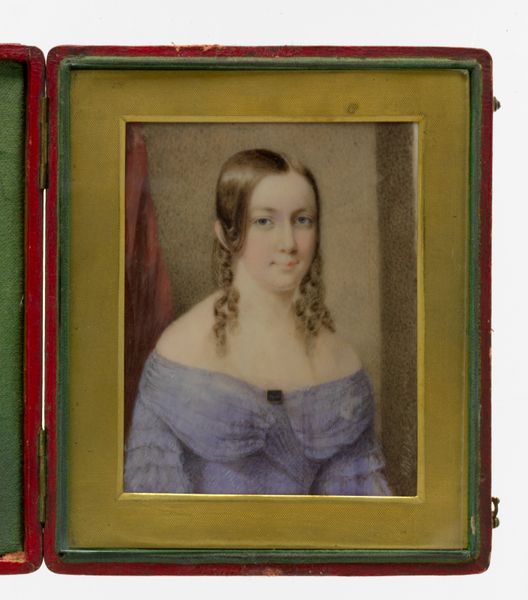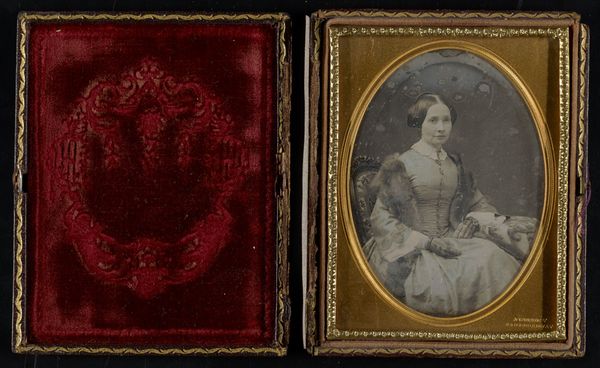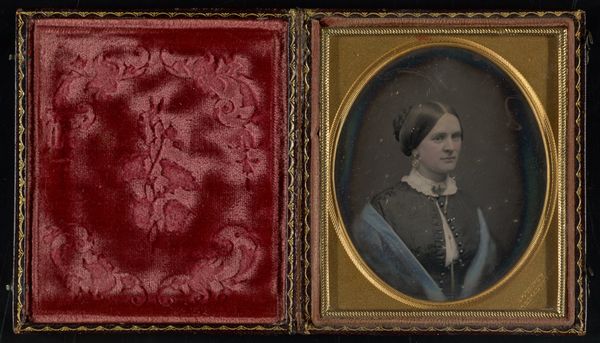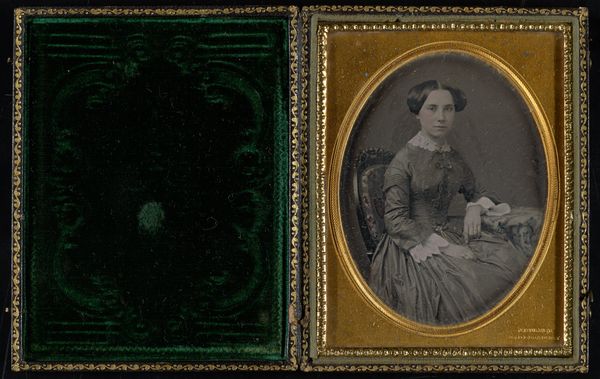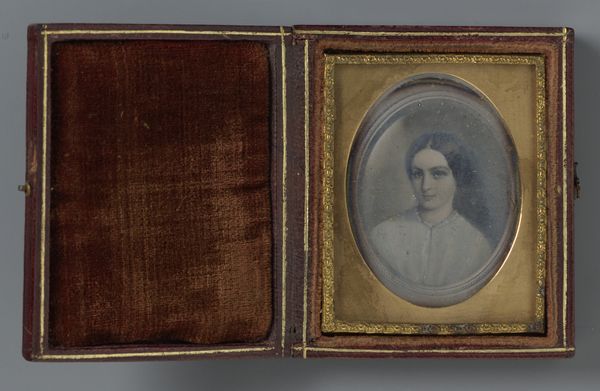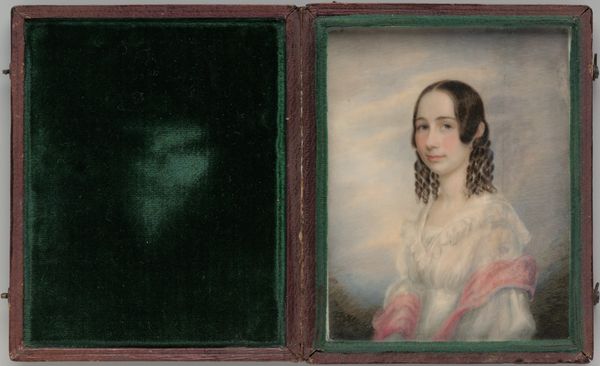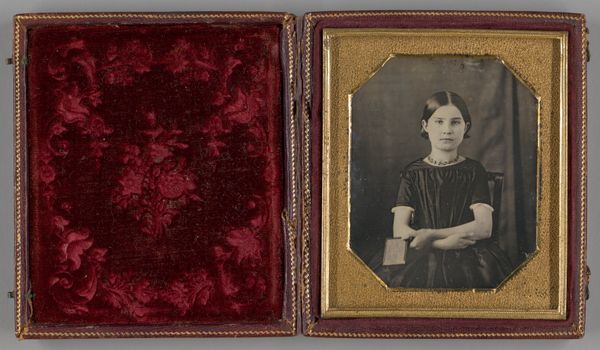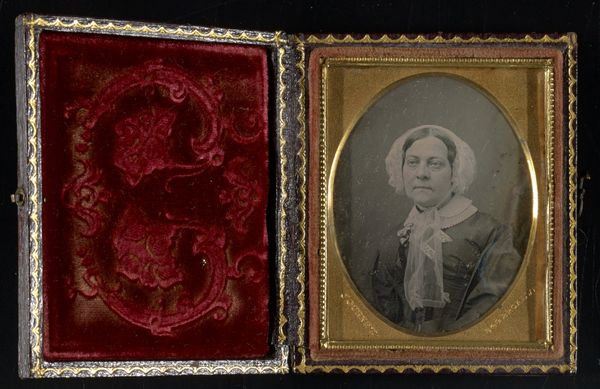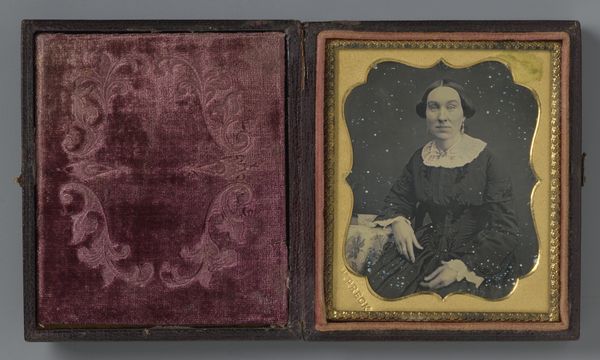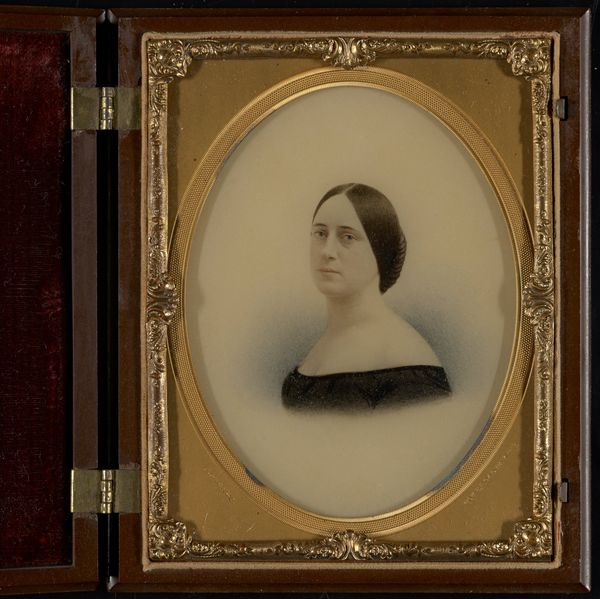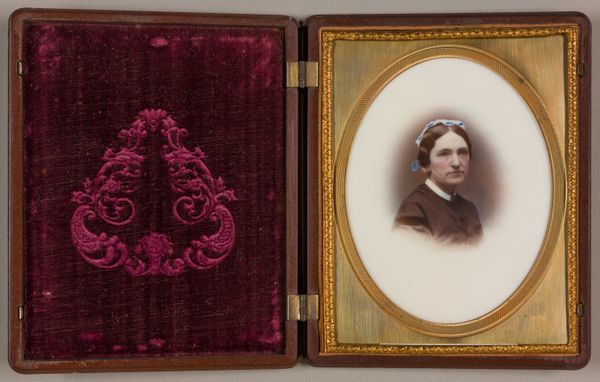
painting, watercolor
#
portrait
#
water colours
#
painting
#
figuration
#
watercolor
#
romanticism
#
miniature
#
watercolor
Dimensions: 3 1/4 x 2 11/16 in. (8.3 x 6.8 cm)
Copyright: Public Domain
Curator: Ah, she gazes out from another time, doesn't she? There's something melancholic, almost fragile, about this watercolor portrait. Editor: You’ve captured its mood perfectly! The Metropolitan Museum holds this gem: "Portrait of a Lady," dating to 1822 by John Robinson. Encased as it is, it's a miniature—a captured moment held within a keepsake box. Curator: It feels like we're intruding, peering into someone's private world. The delicate wash of color and tiny scale adds to that feeling. Like uncovering a secret. Editor: Indeed. The closed case evokes a reliquary, with the portrait functioning almost like an icon. Note the detail, especially around the ruff. Watercolors allow for that amazing level of subtlety. The pillar motif and glimpsed landscape, of course, create that romantic mood—but do they speak to something deeper? What does it mean to present someone against a natural setting like that? Curator: It’s almost dreamlike. She's set against nature, but she’s still contained, defined. Trapped by expectations, perhaps. What strikes me, however, is how much of the human story resides in the seemingly incidental—a bit of lace, the way hair is dressed. That is how one would hope to be remembered by loved ones, after all, for how those seemingly "insignificant" details defined their days. Editor: Those sartorial details speak volumes about social standing, sure, but also her role as a woman in the early 19th century—it becomes part of her symbolic identity. These tiny portraits were deeply meaningful. It reminds me of something Lacan wrote, regarding how people are only knowable because of that which stands in for them, whether material object or word... a beautiful melancholy is imbued in her eyes. Curator: You're right; she becomes both more and less real through this representation. A reminder that a portrait can become more 'real' than its inspiration, a strange trick. Editor: A cultural object becomes a portal! After all, who sees this now—preserved for generations to come—after the depicted is long gone, with these tokens lasting for those left behind to observe as a reminder of days long gone? Food for thought, really! Curator: Well said, it's like holding a memory. I won't forget her gaze, either. That is a thought that stays with me now.
Comments
No comments
Be the first to comment and join the conversation on the ultimate creative platform.

